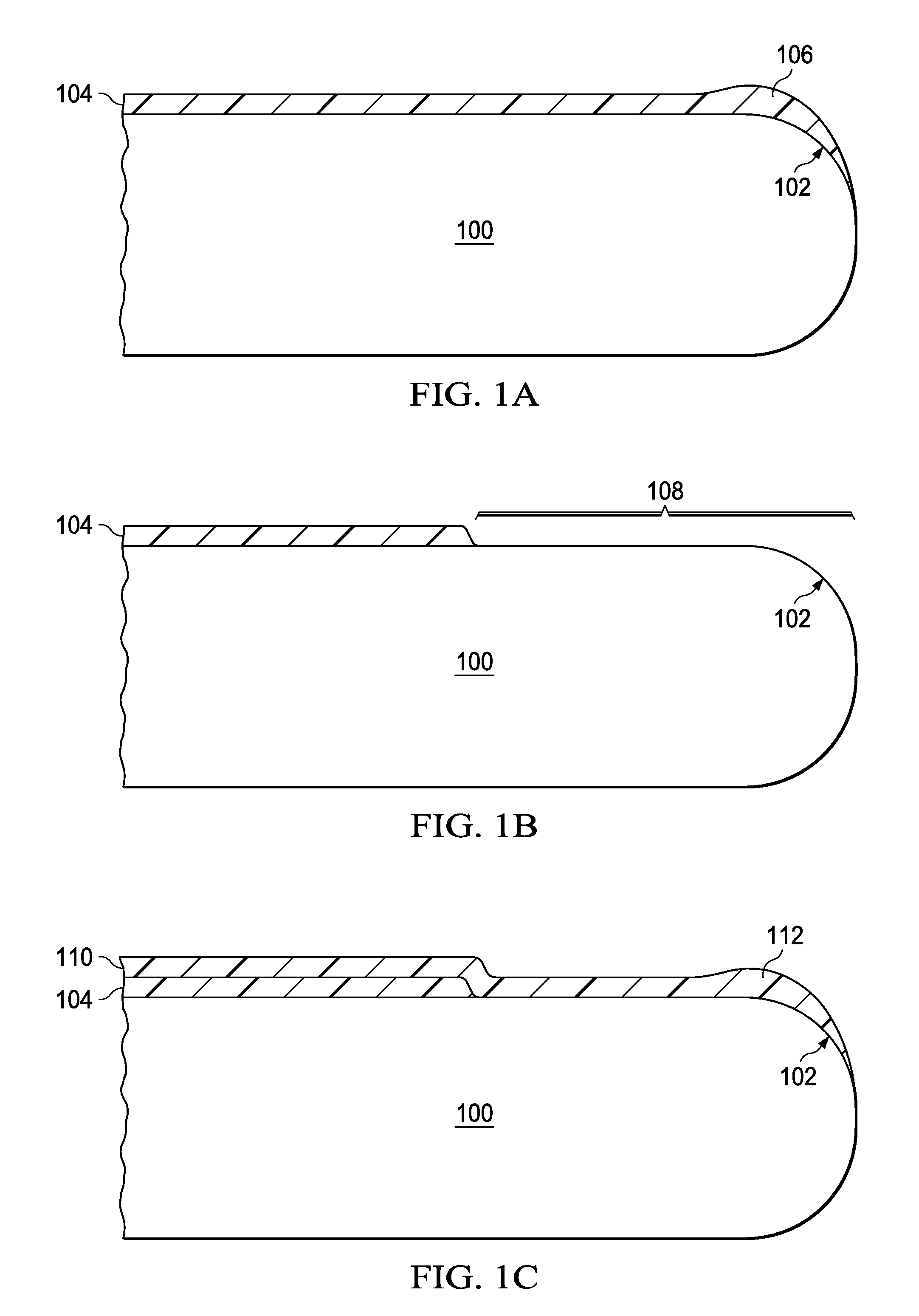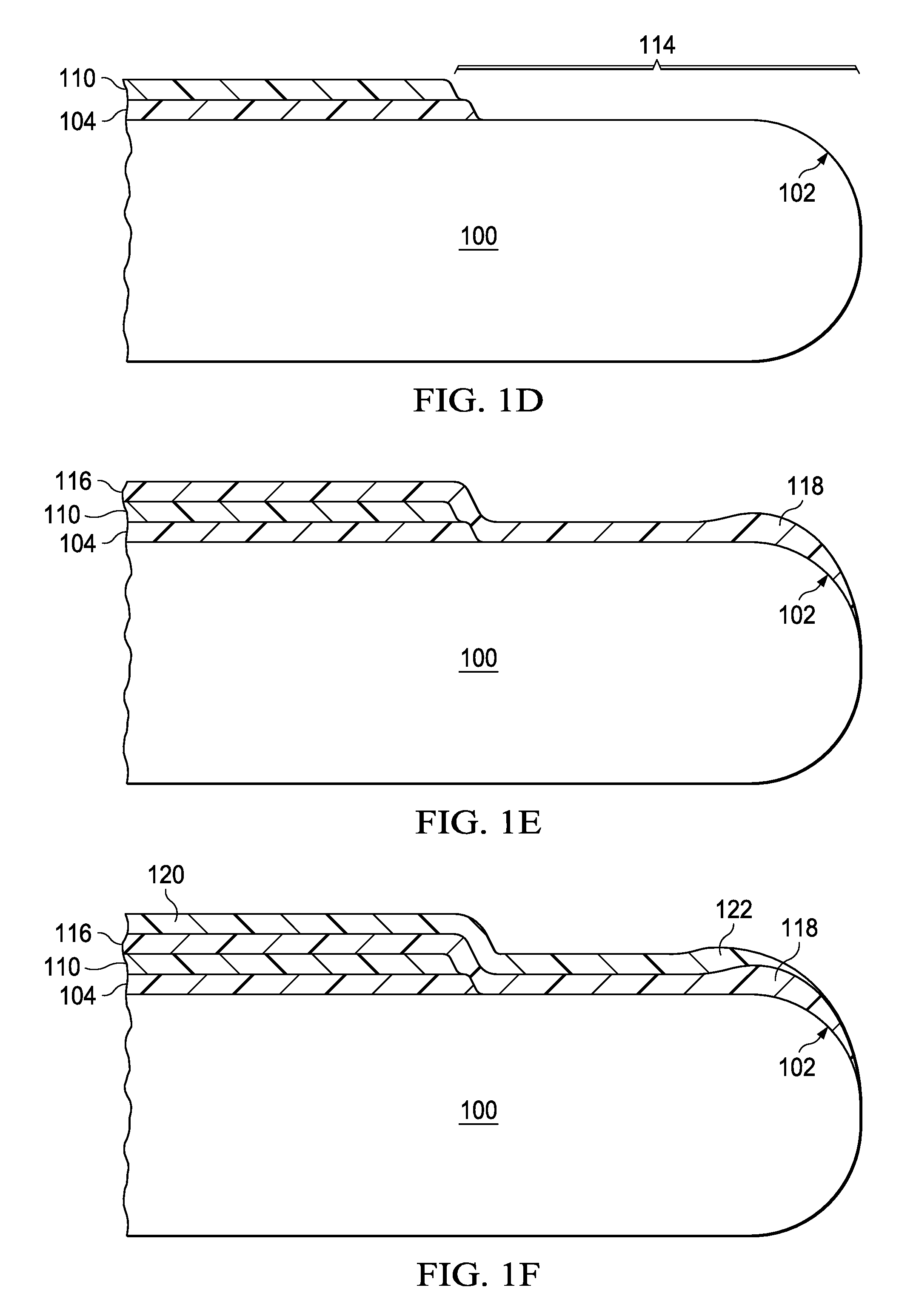Immersion lithography wafer edge bead removal for wafer and scanner defect prevention
a technology of scanning and lithography, applied in the field of integrated circuits, can solve the problems of affecting the processing speed of ebr, affecting the quality of lithography, and affecting the quality of lithography, and achieve the effect of reducing the generation of contamination
- Summary
- Abstract
- Description
- Claims
- Application Information
AI Technical Summary
Benefits of technology
Problems solved by technology
Method used
Image
Examples
first embodiment
[0011]FIG. 1A through FIG. 1G are cross-sections of a wafer edge during formation of a photolithographic layer stack according to the instant invention. FIG. 1A depicts a wafer (100) with an edge region (102) having a radius between 100 and 350 microns. A first BARC layer (104) of a first BARC material is formed on a top surface of the wafer (100), typically by dispensing a measured amount of fluid containing the first BARC material diluted by a first solvent onto the wafer (100) followed by spinning the wafer (100) at several hundred to several thousand rpm while a portion of the first solvent evaporates from the BARC fluid, producing the first BARC layer (104) and a first BARC edge bead (106) along the wafer edge region (102). A composition of the first BARC material and a thickness of the first BARC layer (104) depends on the particular pattern being formed during fabrication of an integrated circuit on the wafer (100), and may be substantially organic, with optional light absorb...
second embodiment
[0019]FIG. 2A through FIG. 2D are cross-sections of a wafer edge during formation of a photolithographic layer stack according to the instant invention. FIG. 2A depicts a wafer (200) with an edge region (202) having a radius between 100 and 350 microns. A first BARC layer (204) of a first BARC material is formed on a top surface of the wafer (200), typically by dispensing a measured amount of fluid containing the first BARC material diluted by a first solvent onto the wafer (200) followed by spinning the wafer (200) at several hundred to several thousand rpm while a portion of the first solvent evaporates from the BARC fluid, producing the first BARC layer (204) and a first BARC edge bead along the wafer edge region (202). A composition of the first BARC material and a thickness of the first BARC layer (204) depends on the particular pattern being formed during fabrication of an integrated circuit on the wafer (200), and may be substantially organic, with optional light absorbing dy...
PUM
| Property | Measurement | Unit |
|---|---|---|
| radius | aaaaa | aaaaa |
| radius | aaaaa | aaaaa |
| thickness | aaaaa | aaaaa |
Abstract
Description
Claims
Application Information
 Login to View More
Login to View More - R&D
- Intellectual Property
- Life Sciences
- Materials
- Tech Scout
- Unparalleled Data Quality
- Higher Quality Content
- 60% Fewer Hallucinations
Browse by: Latest US Patents, China's latest patents, Technical Efficacy Thesaurus, Application Domain, Technology Topic, Popular Technical Reports.
© 2025 PatSnap. All rights reserved.Legal|Privacy policy|Modern Slavery Act Transparency Statement|Sitemap|About US| Contact US: help@patsnap.com



